 |
OUR LAST DAY |
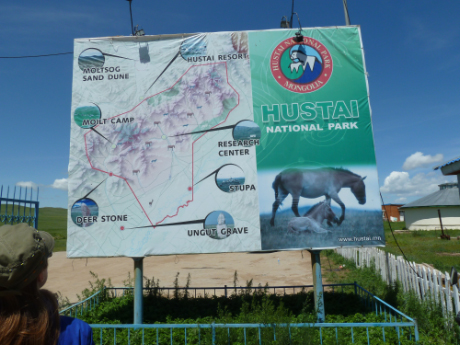 |
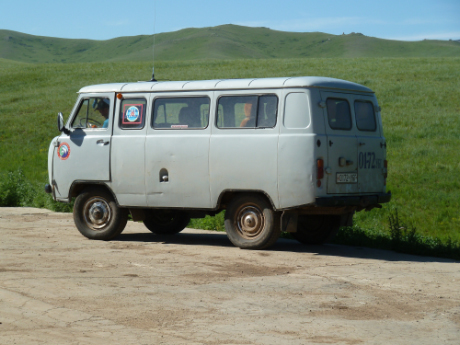 |
|
| Having seen wrestling, archery, and racing, we spent the third day of Naadam away from the city at a preserve for takhi (Przewalski's horses), one of the few remaining true wild horses. Takhi were extinct in the wild but have been reintroduced in this park from zoo populations.
|
No more Land Rovers for us - our transportation in the park was by "Russky" vans--an experience that Jeremy said was not to be missed. | |
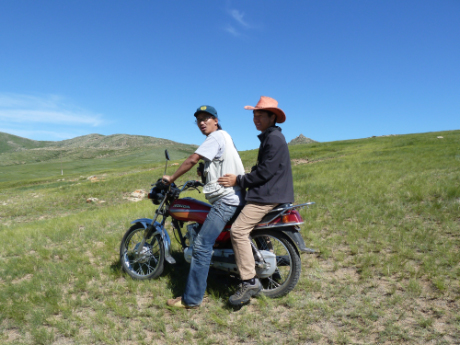 |
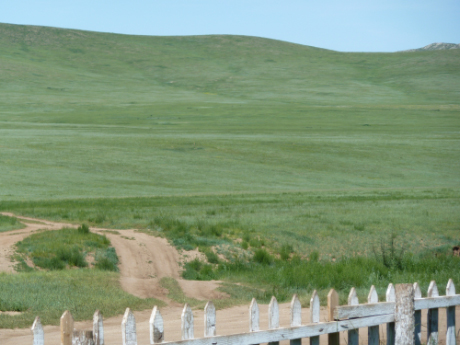 |
|
| Ider wisely decided to use alternate transportation.
|
It was a lovely park, but the takhi were elusive. We did see some far up on a hillside. The guide suggested that we come back in winter when they come further down. Umm - I don't think so.
|
|
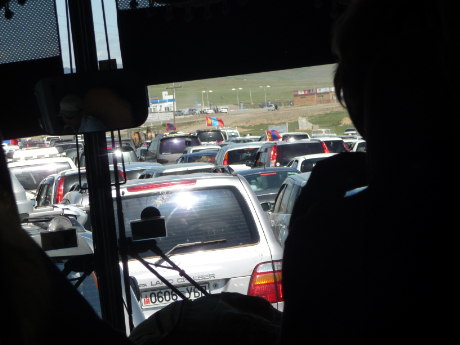 |
 |
|
| On the way back we hit a terrible traffic jam. Ider had warned us that it might be "trafficky" but he never expected this. One problem was that a traffic cop was stopping all traffic on our road for reasons that were obscure--after about 20 minutes Ider jumped out and asked him to let us through because we were guests and had a plane to catch. He did, even though we didn't. Another problem was that Mongolians do not drive in lanes; they just squeeze onto the road and the shoulders wherever they can. At one point our bus driver was racing down the LEFT shoulder of the road with 2-3 lanes of opposing traffic to our right and 4-5 lanes of traffic in our direction to the right of that. And he was playing chicken with oncoming traffic wanting to use the shoulder. Whenever we came to a bridge or a ditch he had to work his way into opposing traffic. He finally cut in front of the opposing cars to get back on the right side of the road. It was an experience.
|
||
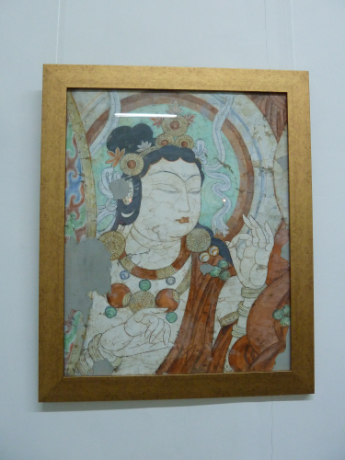 |
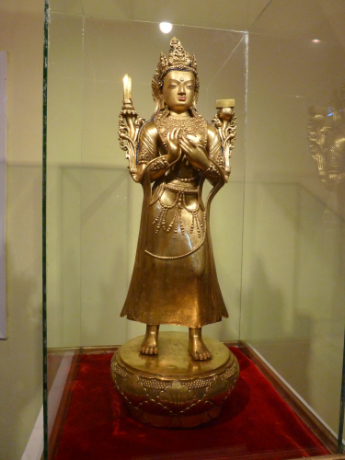 |
|
| But we made it back to Ulaanbaatar in time for our farewell dinner at the Zanabazar Museum. Zanabazar was a 17th century "Living Buddha" who invented a Mongolian writing system and is considered the greatest artist of Mongolia, especially in small bronzes.
|
||
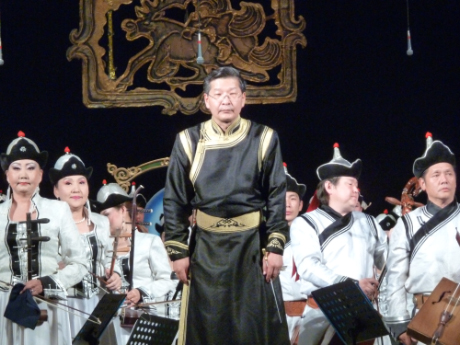 |
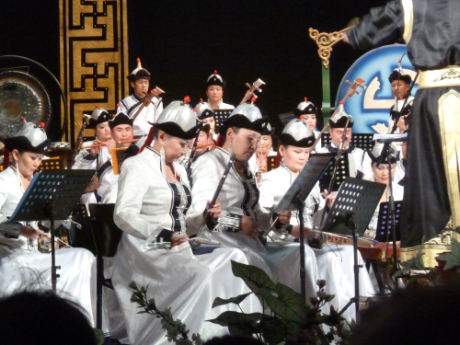 |
|
| After dinner we attended a special Naadam concert by the Mongolian State National Grand Orchestra. Most of the instruments were traditional, including horsehead fiddles in various sizes (played only by men) and a smaller string instrument (the khuuchir) played by women.
|
||
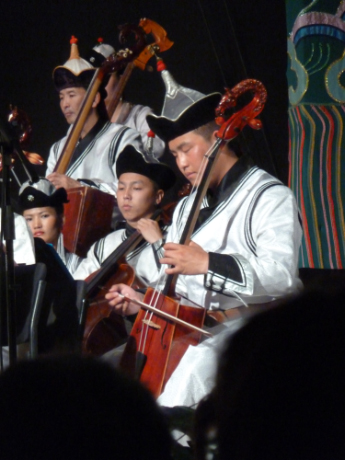 |
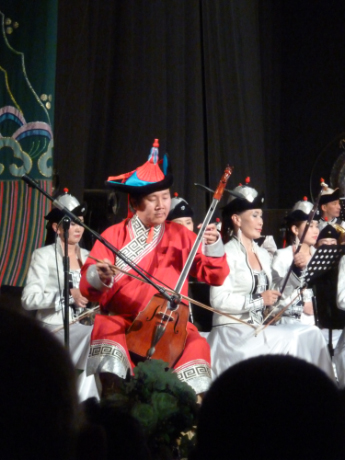 |
|
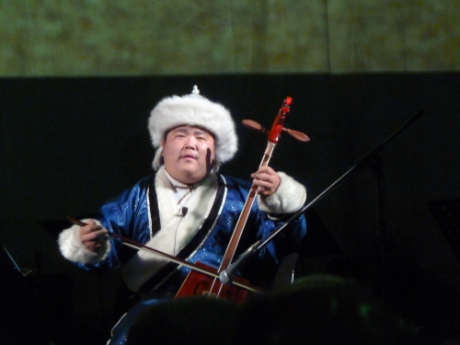 |
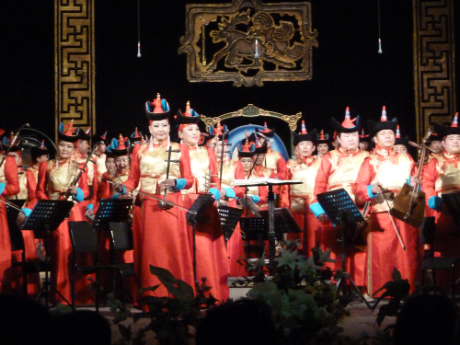 |
|
The Mongolians also have a traditional musical form called Throat Singing in which the singer produces two different tones simultaneously. It is very interesting to listen to.
|
The conclusion of the concert also marked the conclusion of our adventure in Mongolia. | |

|
